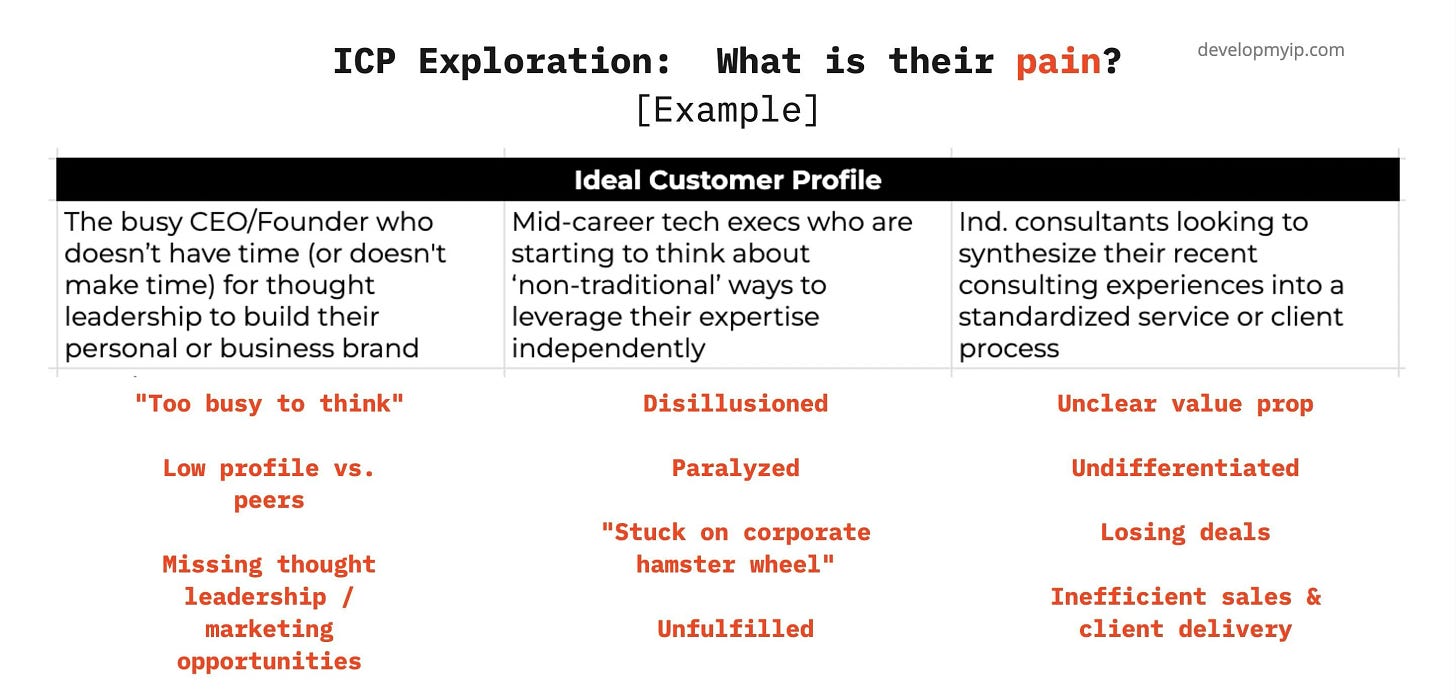GTM Zero to One: Unlocking Value Through Naming Pain
An emerging framework for identifying ICP emotional pain and jobs-to-be-done
Day 27 of writing daily.
Yesterday, I showed a graphic and thinking on three possible ICPs:

Two of those three ICPs feel right, but I’d like to revise and add a third adjacent one based on ability to pay as discussed yesterday:
✅ founders of early-stage startups (seed funded and earlier)
✅ leaders in later stage orgs
🌟 venture studios, incubators, programs, investors and funders that fund and support the above
With these ICPs in mind, I wanted to look at pain and jobs to be done (JTBD) next.
🧠 Framework for Understanding and Solving Pain
As I reflected and worked through this, a framework emerged for thinking about pain points and jobs-to-be-done (JTBD) your ICP:
😫 Emotional Pain – How does this challenge affect them on a personal level?1
💼 JTBD – What intellectual or functional problem are they trying to solve?
💥 Impact – What is the impact if this pain point isn’t addressed?
⭐️ Value Unlocked – What happens if we solve this problem? How does it create growth or value?
ICP 1: Early-Stage Founders
ICP 2: Later-Stage Leaders
ICP 3: Studios, etc
🔑 Conclusion: Unlocking Value by Addressing Pain
Understanding and naming your ICP’s pain and job to be done—and the impact your offering could have—is key to unlocking value for your clients. Whether you're dealing with overwhelmed founders, nonprofit leaders navigating scaling issues, or venture studios supporting entrepreneurs, your ability to identify and solve these pain points is critical.
🛠 Bonus: Favorite Tool of the Day (FTOTD)
First Round’s PMF levels for B2B companies: https://pmf.firstround.com/levels
Check it out again — it’s a game-changer for understanding where your company falls on the PMF spectrum. I just finished reading Level 1 (Nascent), and onto Level 2 (Developing)
The idea of looking at emotional pain is thanks to Wes Wheless again, and his post Putting words to their pain, which is the idea of capturing how the pain makes them feel, often the emotional valence or impact, for example (same ICP chart for him I showed yesterday, but with pain added on:






